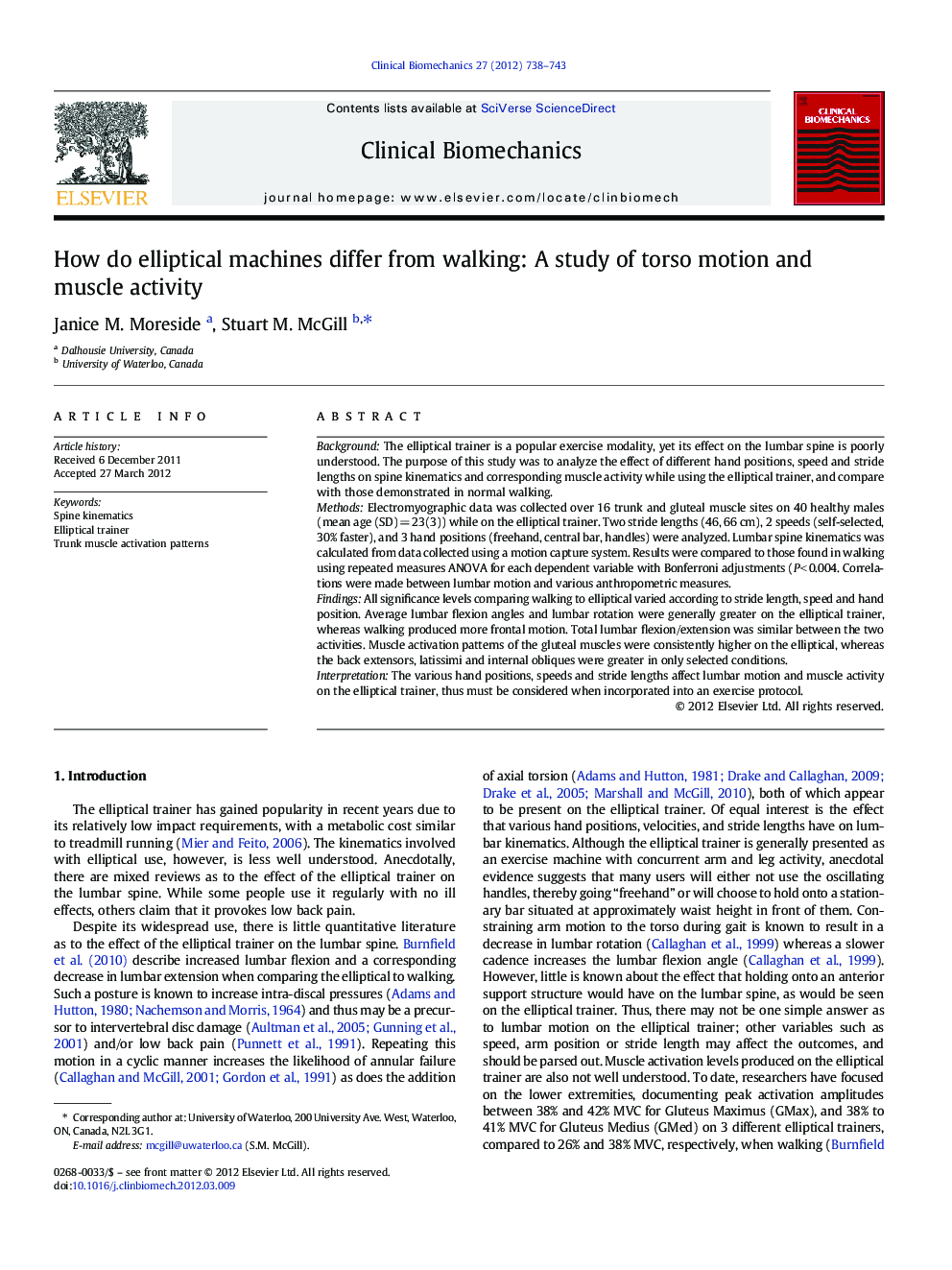| Article ID | Journal | Published Year | Pages | File Type |
|---|---|---|---|---|
| 4050792 | Clinical Biomechanics | 2012 | 6 Pages |
BackgroundThe elliptical trainer is a popular exercise modality, yet its effect on the lumbar spine is poorly understood. The purpose of this study was to analyze the effect of different hand positions, speed and stride lengths on spine kinematics and corresponding muscle activity while using the elliptical trainer, and compare with those demonstrated in normal walking.MethodsElectromyographic data was collected over 16 trunk and gluteal muscle sites on 40 healthy males (mean age (SD) = 23(3)) while on the elliptical trainer. Two stride lengths (46, 66 cm), 2 speeds (self-selected, 30% faster), and 3 hand positions (freehand, central bar, handles) were analyzed. Lumbar spine kinematics was calculated from data collected using a motion capture system. Results were compared to those found in walking using repeated measures ANOVA for each dependent variable with Bonferroni adjustments (P < 0.004. Correlations were made between lumbar motion and various anthropometric measures.FindingsAll significance levels comparing walking to elliptical varied according to stride length, speed and hand position. Average lumbar flexion angles and lumbar rotation were generally greater on the elliptical trainer, whereas walking produced more frontal motion. Total lumbar flexion/extension was similar between the two activities. Muscle activation patterns of the gluteal muscles were consistently higher on the elliptical, whereas the back extensors, latissimi and internal obliques were greater in only selected conditions.InterpretationThe various hand positions, speeds and stride lengths affect lumbar motion and muscle activity on the elliptical trainer, thus must be considered when incorporated into an exercise protocol.
